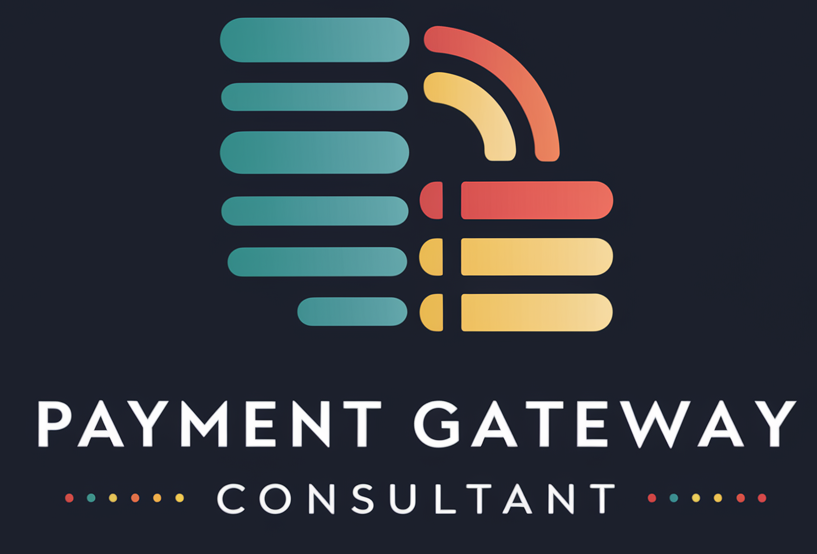Understanding Your Mortgage Payment
For many homeowners, a mortgage payment is one of the largest monthly expenses. It’s important to understand the components that make up your mortgage payment and the factors that can impact the amount you pay each month. By gaining a better understanding of your mortgage, you can explore strategies to potentially lower your payments and save money over the life of your loan.
Components of a Mortgage Payment
A typical mortgage payment consists of four main parts, often referred to as PITI:
- Principal – This is the portion of your payment that goes towards paying off the original amount you borrowed.
- Interest – The interest is what you pay the lender in exchange for borrowing the money. It’s calculated based on your interest rate and the outstanding principal balance.
- Taxes – Property taxes are often collected as part of your mortgage payment and held in an escrow account until they are due to be paid to your local government.
- Insurance – This can include homeowners insurance and private mortgage insurance (PMI) if your down payment was less than 20%.
Factors Affecting Mortgage Payments
Several key factors play a role in determining your mortgage costs:
- Interest rate – A lower interest rate means a lower monthly payment. Interest rates can be fixed, staying the same for the loan term, or adjustable, fluctuating based on market conditions.
- Loan term – Mortgages are typically offered in 15, 20, or 30-year terms. Longer terms mean lower monthly payments, but more interest paid over the life of the loan.
- Property taxes – As home values rise, property taxes can also increase, impacting your mortgage payment if you have an escrow account.
- Insurance premiums – If your down payment was less than 20%, you likely have to pay private mortgage insurance until you reach 20% equity. Homeowners insurance premiums can also change over time.
Understanding these components and factors gives you a foundation to explore ways to lower your mortgage payment and reduce your overall mortgage costs.
Refinancing Your Mortgage
One of the most common ways to lower your mortgage payment is by refinancing your home loan. Refinancing involves taking out a new loan to replace your existing mortgage, typically to take advantage of lower interest rates or to change your loan terms.
Benefits of Refinancing
There are several potential benefits to refinancing your mortgage:
- Lower interest rate – If market rates have dropped since you originally financed your home, refinancing at a lower rate can result in significant savings on your monthly payment and over the life of the loan.
- Extended loan term – While extending your loan term means paying more in interest over time, it can also lower your monthly payment by spreading the cost over a longer period.
- Switch from adjustable to fixed rate – If you currently have an adjustable-rate mortgage (ARM) and are concerned about rising interest rates, refinancing into a fixed-rate loan can provide stability and predictability for your monthly payments.
Steps to Refinance Your Mortgage
The process of refinancing is similar to when you initially applied for your mortgage:
- Check your credit score – A higher credit score generally means better loan terms and interest rates. Check your credit report for errors and take steps to improve your score if needed.
- Shop around for lenders – Compare offers from multiple lenders to find the best interest rates and terms for your situation. Don’t forget to consider fees like closing costs, which can impact your overall savings.
- Gather documentation – You’ll need to provide proof of income, assets, and debts, just like when you initially applied for your mortgage.
- Submit your application – Once you’ve chosen a lender, submit your refinance application and provide any additional documentation requested.
- Close on your new loan – After your application is approved, you’ll sign the closing documents and start making payments on your new, refinanced mortgage.
Keep in mind that refinancing isn’t always the best option. Consider the upfront costs and make sure you plan to stay in your home long enough to recoup those expenses through your monthly savings.
Loan Modification Options
If you’re having trouble making your mortgage payments or are not eligible for refinancing, a loan modification might provide relief. Loan modification permanently changes the terms of your existing mortgage to make your payments more affordable.
What is Loan Modification?
Loan modification is different from refinancing in that it doesn’t replace your existing loan with a new one. Instead, it modifies the terms of your current mortgage. Some potential changes through loan modification include:
- Lowering your interest rate – A reduced interest rate means less of your payment goes towards interest, potentially lowering your monthly payment.
- Extending your loan term – Increasing the number of years you have to repay your mortgage can lower your monthly payments, although you’ll pay more interest over the life of the loan.
- Changing from an adjustable to fixed-rate loan – If you’re concerned about your payments increasing due to having an adjustable-rate mortgage, switching to a fixed rate can provide stability.
- Reducing your principal balance – In some cases, the lender might agree to reduce your outstanding principal balance, which would lower your monthly payments.
How to Apply for Loan Modification
To start the loan modification process:
- Contact your lender – Reach out to your mortgage servicer and express your interest in loan modification. They will provide you with information on their specific modification programs and requirements.
- Gather documentation – You’ll likely need to provide proof of hardship, income, assets, and debts to demonstrate your need for modification and ability to make modified payments.
- Submit your application – Complete and submit your loan modification application along with the required supporting documentation.
- Await decision – Your lender will review your application and make a decision on whether to approve your modification request. This process can take several weeks to a few months.
It’s important to note that loan modification can negatively impact your credit score, although the long-term benefits of more affordable payments might outweigh this drawback.
Extending Your Loan Term
Another way to potentially lower your mortgage payment is by extending your loan term. This involves increasing the number of years over which you repay your mortgage, such as going from a 15-year to a 30-year term.
Pros and Cons of Extending Loan Term
Extending your mortgage term has both advantages and disadvantages to consider:
Pros:
- Lower monthly payments – Spreading your mortgage balance over a longer period means each monthly payment will be smaller.
- Increased cash flow – Lower payments free up money in your monthly budget for other expenses or savings goals.
Cons:
- More interest paid – Although your monthly payments are lower, you’ll pay more in total interest over the life of the loan due to the extended term.
- Slower equity building – More of each payment will go towards interest rather than principal, slowing the pace at which you build equity in your home.
How to Extend Your Loan Term
There are a couple of ways to extend your mortgage term:
- Refinance into a longer-term loan – If interest rates are lower now than when you got your original mortgage, refinancing into a longer term can both reduce your interest rate and extend your repayment period.
- Request a loan modification – If you’re facing financial hardship, your lender may agree to modify your existing loan to extend the term without going through the refinancing process.
Keep in mind that extending your loan term is a trade-off between lower monthly payments and paying more interest over time. Consider your long-term financial goals when deciding if this option is right for you.
Removing Private Mortgage Insurance (PMI)
If you put less than 20% down when you bought your home, you’re likely paying for private mortgage insurance (PMI) as part of your monthly mortgage payment. Eliminating PMI when you become eligible is an easy way to reduce your mortgage costs without refinancing.
What is PMI?
Private mortgage insurance is a type of insurance that protects your lender in case you default on your loan. It’s typically required if your down payment was less than 20% of the home’s purchase price. PMI can cost anywhere from 0.5% to 1.5% of your loan balance per year, which can add up to a significant amount over time.
How to Remove PMI
There are a few ways to remove PMI from your mortgage:
- Automatic termination – For loans originated after July 1999, your lender must automatically cancel PMI when your loan balance reaches 78% of the original purchase price.
- Request cancellation – You have the right to request PMI cancellation once your loan balance drops to 80% of your home’s original value. You’ll need to be current on your payments and may have to provide evidence that your home hasn’t declined in value.
- Refinance – If your home has significantly increased in value, you might consider refinancing to eliminate PMI. If your new loan balance is less than 80% of your home’s current appraised value, you won’t have to pay PMI on the new loan.
Removing PMI can save you hundreds of dollars per year without any changes to your loan terms or interest rate, making it a simple way to reduce your mortgage payment.
Reassessing Property Taxes
Property taxes are a substantial part of many homeowners’ monthly mortgage payments. While you don’t have control over the tax rate set by your local government, you can potentially lower your property tax bill by requesting a reassessment of your home’s value.
Understanding Property Tax Reassessment
Your property taxes are calculated based on the assessed value of your home. If you believe your home is overvalued compared to similar properties in your area, you can request a reassessment from your local tax authority.
Some common reasons for reassessment include:
- Errors in the initial assessment
- Significant changes to your property
- Housing market fluctuations
- Comparable homes in your area selling for less
How to Request a Property Tax Reassessment
The process for requesting a property tax reassessment varies by location, but generally involves these steps:
- Research comparable properties – Look for recent sales of homes similar to yours in size, age, location, and features. This data helps support your case for a lower assessed value.
- File a formal appeal – Contact your local tax assessor’s office to request the necessary forms and submit your reassessment appeal along with supporting documentation.
- Attend the hearing – You may have the opportunity to present your case at a formal hearing. Be prepared with evidence and a clear argument for why your home should be reassessed.
- Await the decision – The tax assessor’s office will review your appeal and make a decision. If your reassessment is approved, your property tax bill will be adjusted, lowering your monthly mortgage payment.
Keep in mind that there’s no guarantee your reassessment request will be approved. However, if you believe your home is overvalued, it may be worth the effort to potentially save on property taxes and reduce your mortgage costs.
Reviewing Homeowners Insurance
Homeowners insurance is another cost often included in monthly mortgage payments. While you can’t eliminate insurance altogether, you may be able to reduce your premiums by shopping around or making changes to your coverage.
Comparing Insurance Policies
Just like with any other type of insurance, it pays to shop around and compare homeowners insurance policies from multiple providers. Look for policies that offer the coverage you need at a competitive price. Don’t forget to consider factors like deductibles, coverage limits, and excluded perils when comparing policies.
Some tips for getting the best deal on homeowners insurance:
- Bundle your policies – Many insurers offer discounts if you bundle your home and auto insurance policies with the same company.
- Increase your deductible – Choosing a higher deductible means you’ll pay more out of pocket if you need to file a claim, but it can also significantly reduce your premiums.
- Make home improvements – Updating your home’s electrical, plumbing, or HVAC systems, or adding safety features like burglar alarms and smoke detectors, may qualify you for lower rates.
- Maintain good credit – Many insurers use credit-based insurance scores to determine premiums, so keeping your credit in good shape can help you get better rates.
Bundling Insurance Policies
Bundling your homeowners insurance with other policies, such as auto insurance, is one of the easiest ways to save on premiums. Insurance companies often offer multi-policy discounts as an incentive for customers to keep all their business with one provider.
Benefits of bundling insurance policies include:
- Savings – Multi-policy discounts can range from 5% to 25%, depending on the insurer and the policies you’re bundling.
- Convenience – Keeping all your policies with one company simplifies the billing and claims process, and may even allow you to align policy renewal dates.
- Loyalty perks – Some insurers offer additional benefits, such as accident forgiveness or single deductibles, for long-term customers with multiple policies.
To find bundling discounts, start by contacting your current insurer to see what multi-policy options they offer. Then compare quotes from other providers to ensure you’re getting the best deal overall. Remember, the cheapest option isn’t always the best – make sure you’re getting adequate coverage and good customer service as well.
Making Bi-Weekly Payments
Switching from monthly to bi-weekly mortgage payments is another strategy that can help you save money and pay off your loan faster without making major changes to your budget.
How Bi-Weekly Payments Work
With a bi-weekly payment plan, you make half your regular mortgage payment every two weeks instead of one full payment each month. Because there are 52 weeks in a year, this results in 26 half-payments – the equivalent of 13 full monthly payments per year instead of the usual 12.
Here’s how those extra payments can make a difference:
| Loan Term | Extra Payments Per Year | Years Saved | Interest Saved* |
|---|---|---|---|
| 30-Year | 1 | 4-5 Years | $20,000-$30,000 |
| 15-Year | 1 | 1-2 Years | $5,000-$10,000 |
*Actual interest savings will depend on your loan balance and interest rate.
Benefits of Bi-Weekly Payments
The main advantages of making bi-weekly mortgage payments include:
- Pay off your mortgage faster – The equivalent of one extra payment per year can shave several years off your loan term.
- Save on interest – Paying your loan off faster means paying less total interest over the life of the mortgage.
- Build equity more quickly – With more of each payment going towards principal, you’ll build equity in your home faster.
- Easier budgeting – Splitting your mortgage payment in half and paying every two weeks can be easier to manage than one large monthly payment.
To set up bi-weekly payments, start by contacting your lender to see if they offer this option. Some lenders may charge a fee for bi-weekly payments or require you to enroll in an automatic payment plan. If your lender doesn’t offer a bi-weekly option, you can still make extra principal payments on your own to achieve similar benefits.
#ED#
See also:






